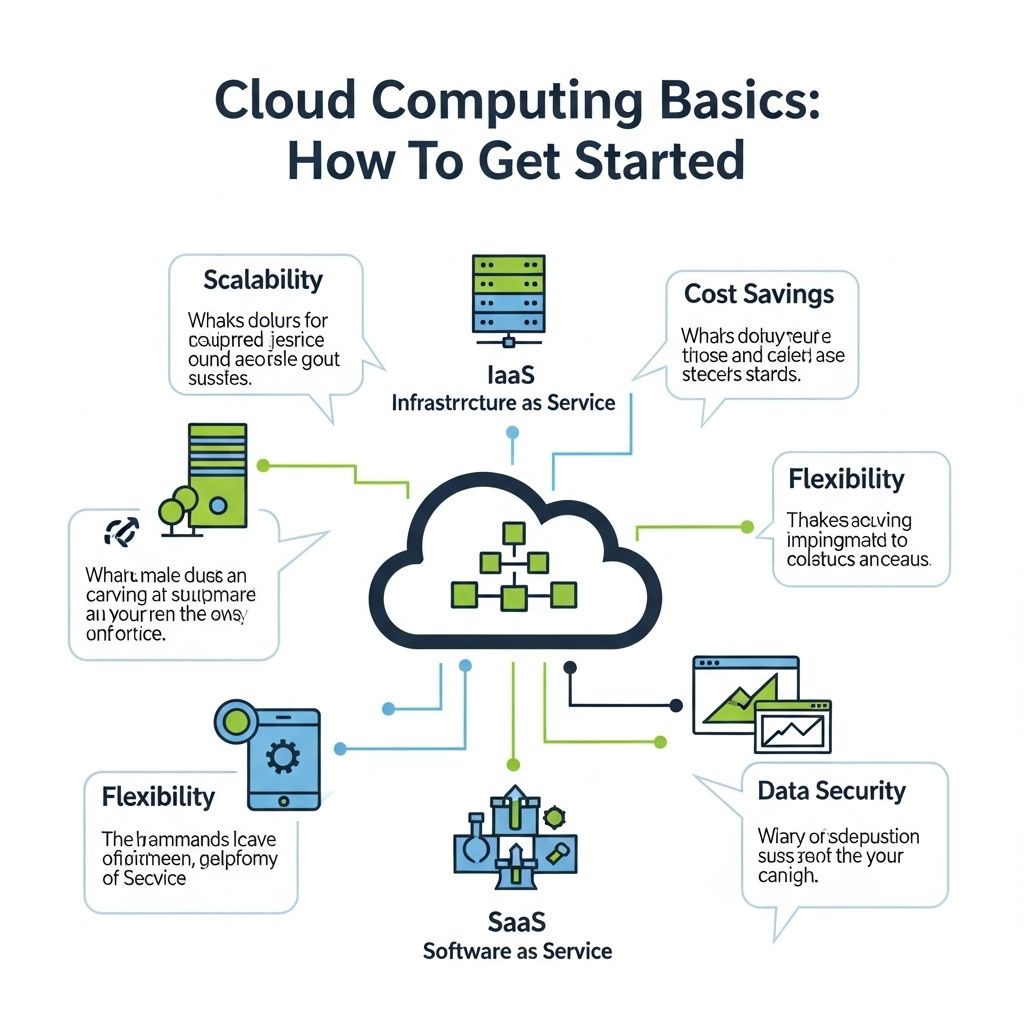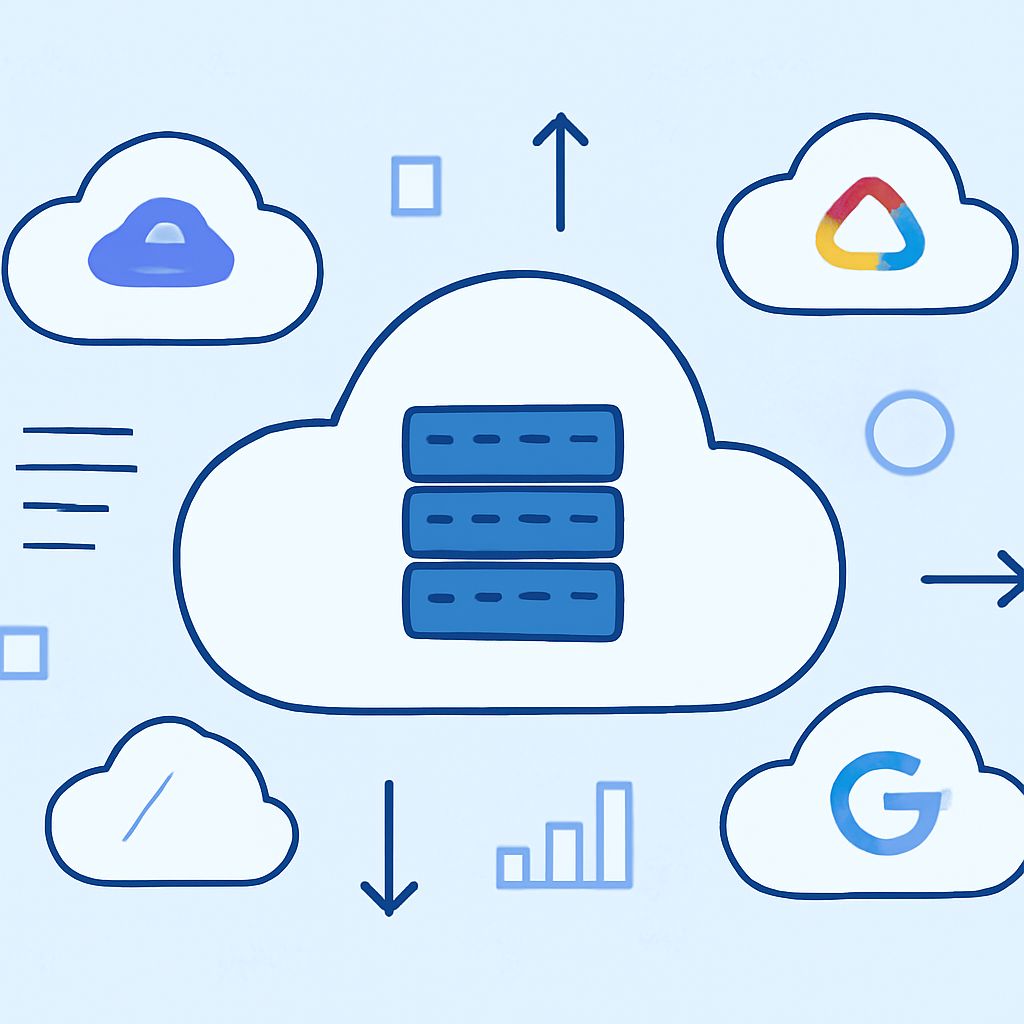As technology continues to evolve, cloud computing has emerged as a transformative force, reshaping how individuals and businesses manage data, applications, and resources. Understanding the fundamentals of cloud computing is essential for anyone looking to leverage its capabilities. In this article, we’ll explore the key concepts of cloud computing, its deployment models, and steps to get started in this exciting field.
What is Cloud Computing?
At its core, cloud computing refers to the delivery of computing services over the internet, enabling on-demand access to a shared pool of configurable resources. These resources can include servers, storage, databases, networking, software, and analytics tools. By utilizing cloud services, users can avoid the complexities of owning and maintaining physical infrastructure.
Key Characteristics of Cloud Computing
- On-demand self-service: Users can provision resources automatically, without requiring human intervention from the service provider.
- Broad network access: Services are accessible over the network from a variety of devices, including laptops, smartphones, and tablets.
- Resource pooling: Providers pool computing resources to serve multiple customers, dynamically assigning and reallocating resources as needed.
- Rapid elasticity: Resources can be quickly scaled up or down depending on demand.
- Measured service: Resource usage can be monitored, controlled, and reported, providing transparency for both the provider and consumer.
Types of Cloud Computing Services
Cloud computing services are generally categorized into three main types: Infrastructure as a Service (IaaS), Platform as a Service (PaaS), and Software as a Service (SaaS). Each of these models serves different purposes and caters to various user needs.
Infrastructure as a Service (IaaS)
IaaS provides virtualized computing resources over the internet. Users can rent IT infrastructures such as virtual machines, storage, and networks instead of investing in physical hardware. This is ideal for businesses that want to avoid the upfront costs of hardware acquisition and maintenance.
Platform as a Service (PaaS)
PaaS offers a platform allowing customers to develop, run, and manage applications without the complexity of building and maintaining the underlying infrastructure. PaaS provides developers with tools and services that enhance productivity and streamline application development.
Software as a Service (SaaS)
SaaS delivers software applications over the internet on a subscription basis. Users can access these applications through web browsers without needing to install them on their devices. Examples include Google Workspace, Salesforce, and Microsoft 365.
Cloud Deployment Models
Cloud computing can be deployed in several ways, each fitting specific business needs. The primary deployment models are:
Public Cloud
Public clouds are owned and operated by third-party cloud service providers, who deliver resources over the internet. This model is cost-effective as users only pay for the resources they consume.
Private Cloud
A private cloud is exclusively used by one organization, providing greater control over security and compliance. It can be hosted on-premises or by a third-party provider, depending on business needs.
Hybrid Cloud
Combining public and private clouds, hybrid clouds allow data and applications to be shared between them. This model provides greater flexibility and more deployment options, supporting both on-premises and cloud-based solutions.
Community Cloud
Community clouds are shared by several organizations with similar requirements, often managed by one of the participants or a third party. This model enhances collaboration while maintaining security and compliance among similar organizations.
Getting Started with Cloud Computing
Embarking on your cloud computing journey can seem daunting, but breaking it down into manageable steps can make the process smoother. Here’s a guide to help you get started:
1. Understand Your Needs
Before diving into cloud services, assess your business or personal needs:
- Identify the problems you want to solve.
- Determine the scale of resources required.
- Evaluate your current IT infrastructure.
2. Choose the Right Cloud Model
Based on your needs and budget, decide on the most suitable cloud model:
- If you need flexibility and cost savings, consider a public cloud.
- If security and control are priorities, a private cloud may be ideal.
- If you require a combination, look into hybrid cloud solutions.
3. Select a Cloud Provider
Research and compare cloud service providers based on the following criteria:
| Provider | Service Type | Key Features |
|---|---|---|
| Amazon Web Services (AWS) | IaaS, PaaS, SaaS | Scalability, extensive service offerings |
| Microsoft Azure | IaaS, PaaS | Hybrid capabilities, enterprise integration |
| Google Cloud Platform (GCP) | IaaS, PaaS | Strong analytics, machine learning |
| IBM Cloud | IaaS, PaaS | AI, blockchain integration |
4. Train Your Team
Investing in training is crucial for effectively utilizing cloud services. Consider providing:
- Formal training sessions
- Online courses and certifications
- Hands-on practice with cloud tools
5. Implement and Monitor
Once you have selected a provider and trained your team, it’s time to implement cloud solutions. Monitor your cloud usage and costs regularly to ensure your services meet your expectations and adjust as needed.
Best Practices for Cloud Computing
To maximize the benefits of cloud computing, adhere to these best practices:
- Security first: Prioritize security measures, such as encryption and access controls, to protect your data.
- Regular backups: Ensure that your data is backed up regularly to prevent loss in case of failures.
- Cost management: Use cloud cost management tools to monitor spending and optimize usage.
- Stay updated: Keep abreast of the latest cloud technologies and trends to leverage new features and improvements.
Conclusion
Cloud computing is revolutionizing the way we think about technology and data management. By grasping its fundamental concepts and understanding how to get started, you can position yourself or your organization to take full advantage of the cloud. Remember, the journey into cloud computing is ongoing, and staying informed and adaptable is key to success in this ever-changing landscape.
FAQ
What is cloud computing?
Cloud computing is the delivery of computing services, including storage, servers, databases, networking, software, and analytics, over the internet (the cloud) to offer faster innovation, flexible resources, and economies of scale.
What are the different types of cloud computing?
The main types of cloud computing are public, private, and hybrid clouds. Public clouds are owned by third-party service providers, private clouds are dedicated to a single organization, and hybrid clouds combine both public and private elements.
How do I get started with cloud computing?
To get started with cloud computing, first assess your needs, choose a cloud service provider, set up an account, and start with basic services like storage or virtual machines to familiarize yourself with the platform.
What are the benefits of using cloud computing?
The benefits of cloud computing include cost savings, scalability, flexibility, improved performance, and enhanced security. It allows organizations to access resources on demand without extensive hardware investments.
Is cloud computing secure?
While no system is completely secure, reputable cloud service providers implement robust security measures, including data encryption, access controls, and compliance with industry standards to protect your data.
What industries benefit most from cloud computing?
Industries such as healthcare, finance, education, and retail benefit significantly from cloud computing due to its ability to enhance collaboration, improve data management, and reduce costs.




